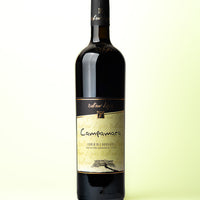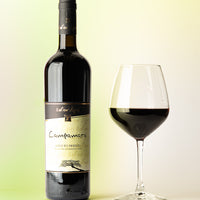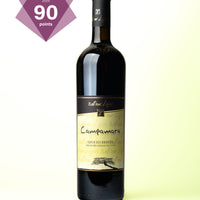Campamara
€39,00



Campamara
€39,00
IGT ISOLA DEI NURAGHI
Its name of Phoenician origin comes from the location where we grow our grapes.
Its original Phoenician name derives from the locality where the vineyard is located.
Grape variety: Cabernet Sauvignon
Type: dry red
Soil type: marly
Training system: free cordon
Planting density: 4,100 vines per hectare
Plant protection methods: integrated pest management
Vineyard yield: 80/90 quintals per hectare



